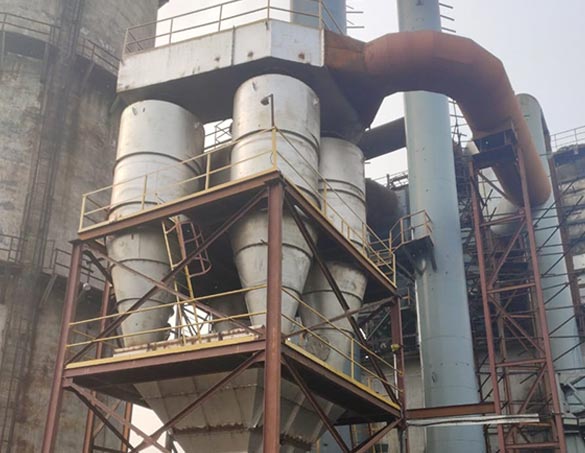Cyclone Separators constitute an essential part of artificial technology in areas in which the gas aqueducts separation is needed to be free of dust patches. Gas processing shops use these forces similar as centrifugal, gravitational, and inertial to produce largely effective cyclones, which capture and discard dust patches from the flowing gas. The present composition will show you out of the cyclones the principle working, how they serve and the unique benefit they enjoy in the assiduity.

Cyclone Separator Working Principle
While Cyclone Separators may be grounded on only one principle- the creation of the binary whirlpool it’s this principle that makes them distinct from other air separation technologies. As the gust of dust- laden sluice goes in through a cyclone, an contrary centrifugal force that fires in a helical manner of the indirect inflow comes into play. Accordingly, laden with coarser dust patches, the stronger force pulls the patches towards the external circumference of the cyclone.
The dust patches, which are the thick element, are separated from the gas sluice by the centrifugal force which is directed towards the wall of the cyclone. The dust patches latterly lose their instigation and their graveness pulls them down into a hopper located at the bottom of the cyclone. The purified gas also is a vacuum out, the outlet of the cyclone which located at the top of the device makes for good separation of dust.
Advantages of Cyclone Separators
- No Moving Corridor: The top benefit of the cyclone type is that its lack of moving corridor and ferocious design explain for its cost effectiveness and performance. This particular trait differentiates turbines from conventional forms that have breakdowns and conservation needs making them expensive. Having just a many corridor in terms of their wear and tear and gash, the Cyclone Separators give a possible durable and dependable result to dust separation in marketable areas.
- Pre-Cleaning Effectiveness: Hurricane aid does a veritably good job being the original cleanser, to a more complex dust collection system. patches of coarse size are trapped by centrifugal force before they get to crossing the advanced dust collectors or filtration sections where they may get into machines and beget damage. This helps to optimize overall effectiveness and protract outfit life. This pre-cleaning element, on the other hand, isn’t only a part of the process internal effectiveness but also of LIGHTENING the dust collection bias’ posterior workloads.
- Flyspeck Size Range Junking: Cyclone stills clearly have an edge when it comes to their effectiveness in sizing the separated flyspeck ranges, which they target for separation. Through manufacturing specific designs and adaptation settings, the in- erected cyclone division can successfully capture patches within a size range to give the detailed control over the position of flyspeck separation effectiveness. Rigidity, thereby, is what leads to the use of Cyclone Separators in myriad of industial operations with distinct dust patches parcels operations of cyclone partitions.
Applications of Cyclone Separators
Cyclone partitions find wide operation across diligence that bear robust dust separation results. Some common sectors where cyclone partitions are employed include
- Mining and Mineral Processing: Cyclone partitions are integral to mining operations, aiding in the separation of ore patches and waste accoutrements from gas aqueducts.
- Food Processing: In food manufacturing installations, Cyclone Separators are used to remove pollutants similar as dust, dirt, and allergens from recycling surroundings, icing product quality and compliance with safety norms.
- Woodworking and Carpentry: Woodworking shops and carpentry shops calculate on cyclone partitions to prize sawdust and wood patches from the air, maintaining clean workspaces and enhancing air quality for workers.
- Chemical and Pharmaceutical Diligence: Cyclone partitions play a pivotal part in chemical and pharmaceutical product installations, where they prop in separating fine particulates, maquillages, and aerosols from gas aqueducts to help impurity and insure product chastity.
Conclusion
Cyclone partitions offer a dependable and effective result for dust separation in different artificial operations. By staking on the centrifugal, gravitational, and inertial forces generated within the system, Cyclone Separators effectively remove dust patches from gas aqueducts while offering distinct advantages similar as simplicity, pre-cleaning effectiveness, and flyspeck size range junking capabilities. With their wide- ranging connection and capability to enhance functional effectiveness, cyclone partitions remain essential factors in diligence seeking effective dust control and air quality operation results.
